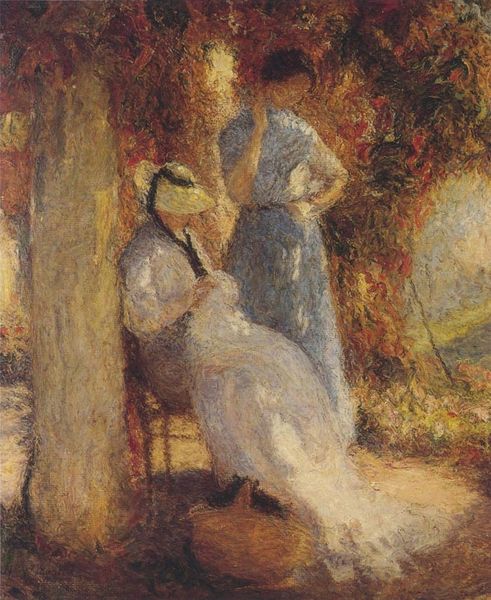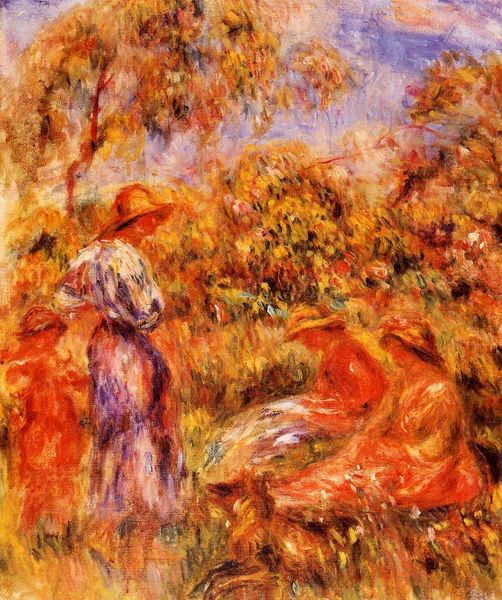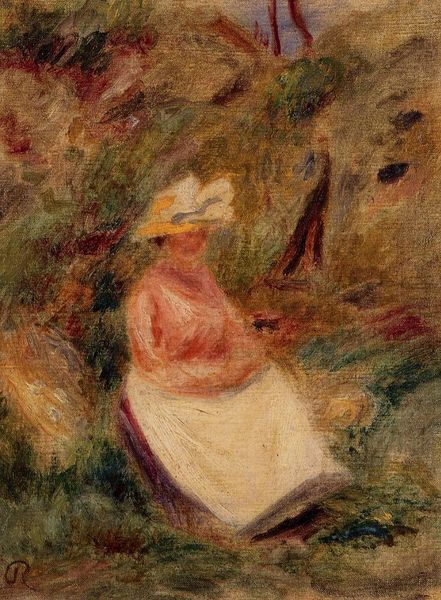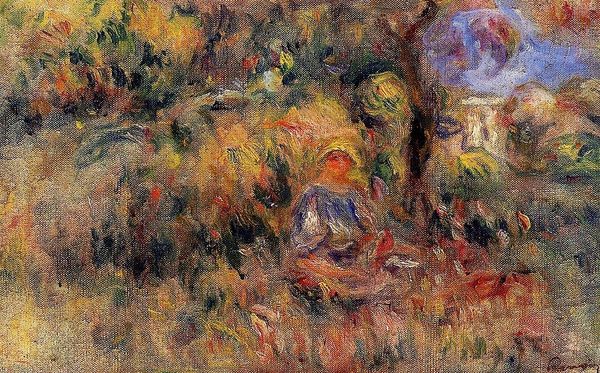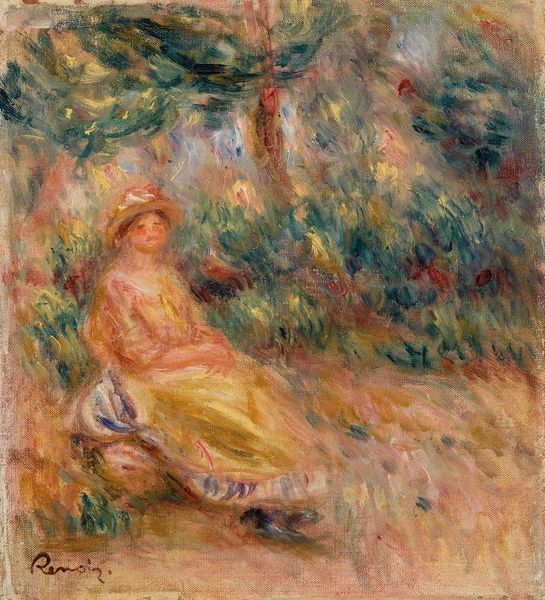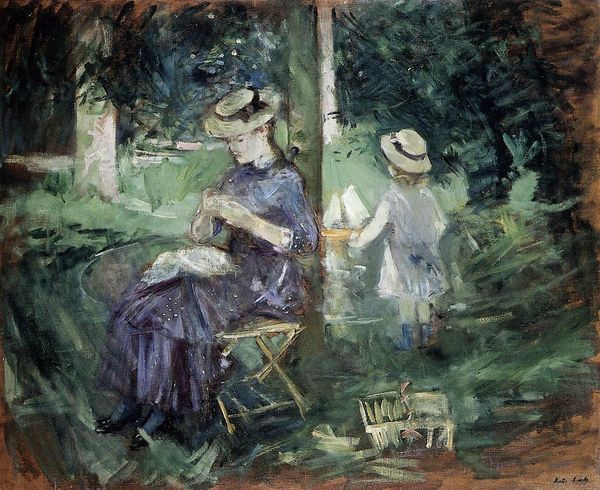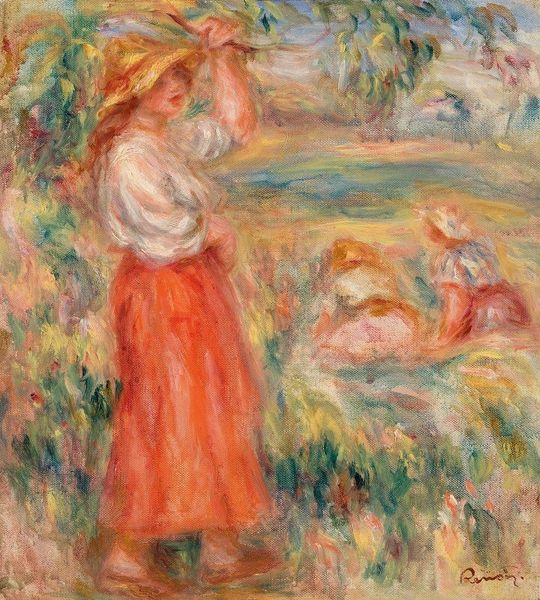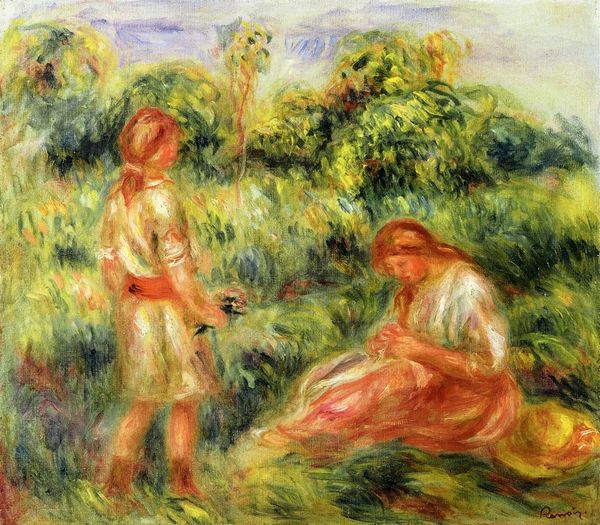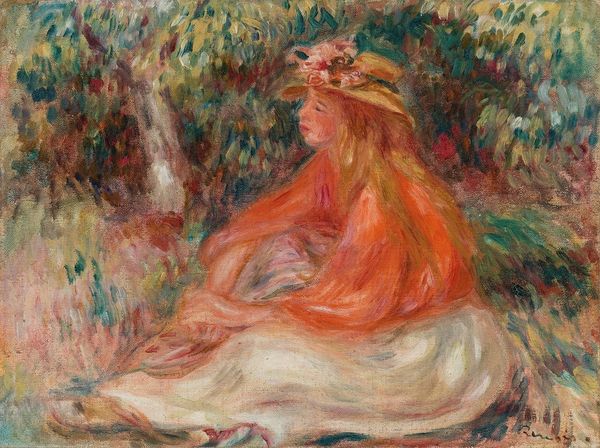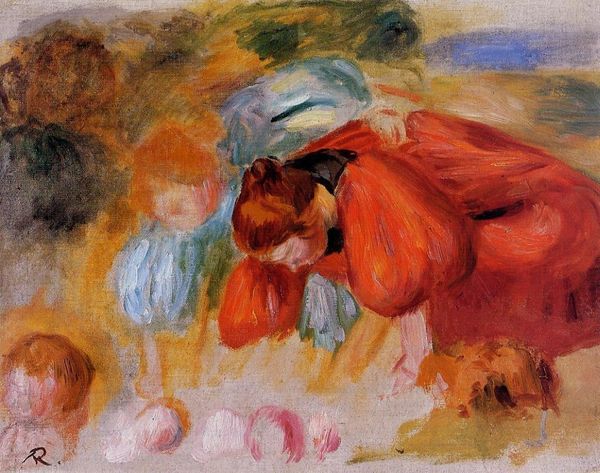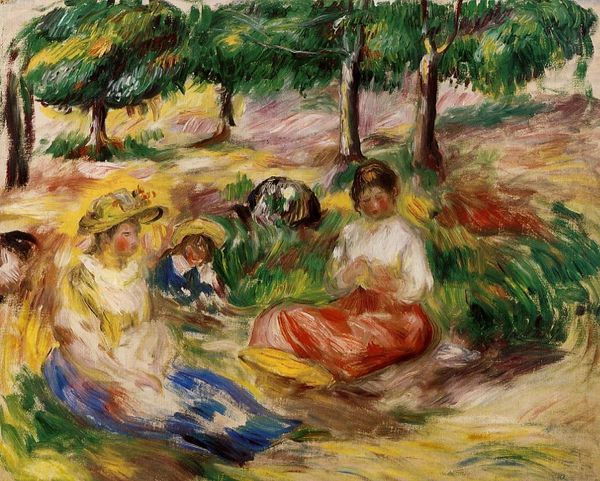
Copyright: Public domain
Editor: This is Renoir's "Two Women in a Garden," painted in 1906, rendered, it seems, in oil. It feels so light and airy! What strikes you most about this piece? Curator: I immediately consider Renoir's embrace of *plein-air* painting. Look at the application of the paint. The visible brushstrokes almost dissolve form, turning figures and landscape into a unified surface. How does this break down the traditional hierarchy of the academy? Editor: That's interesting! I guess it democratizes the scene somehow. It isn't focusing solely on the figures, it blends them with the environment in this egalitarian way, doesn't it? Curator: Exactly. Renoir here, much like other Impressionists, used industrially produced paints straight from the tube. Consider the effect this has. The freedom afforded by this shift is important. It removed constraints of relying only on self-ground pigments and expanded art to more popular audiences through the visibility of the everyday. What does that visibility then mean in the context of the changing labor models during the industrial age? Editor: So, you’re saying that this change of materials really democratizes the access and means to creating art. The subject is then also representing everyday life. The themes and the physical materials are reflections of a move toward greater access to different experiences, both visual and material. I never really thought about it that way! Curator: And this connection is central to how we engage with this painting now! Looking at it through the lens of materials and means of production shows how artworks are products deeply entwined with their specific social and historical contexts. Editor: Definitely a new way to see Impressionism. Thanks!
Comments
No comments
Be the first to comment and join the conversation on the ultimate creative platform.
